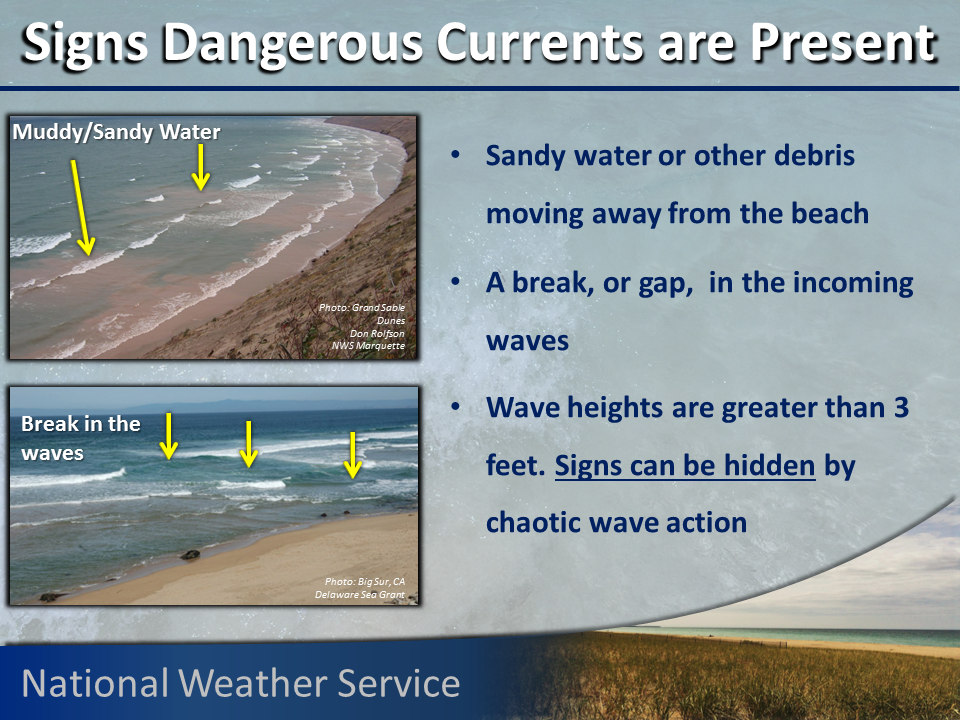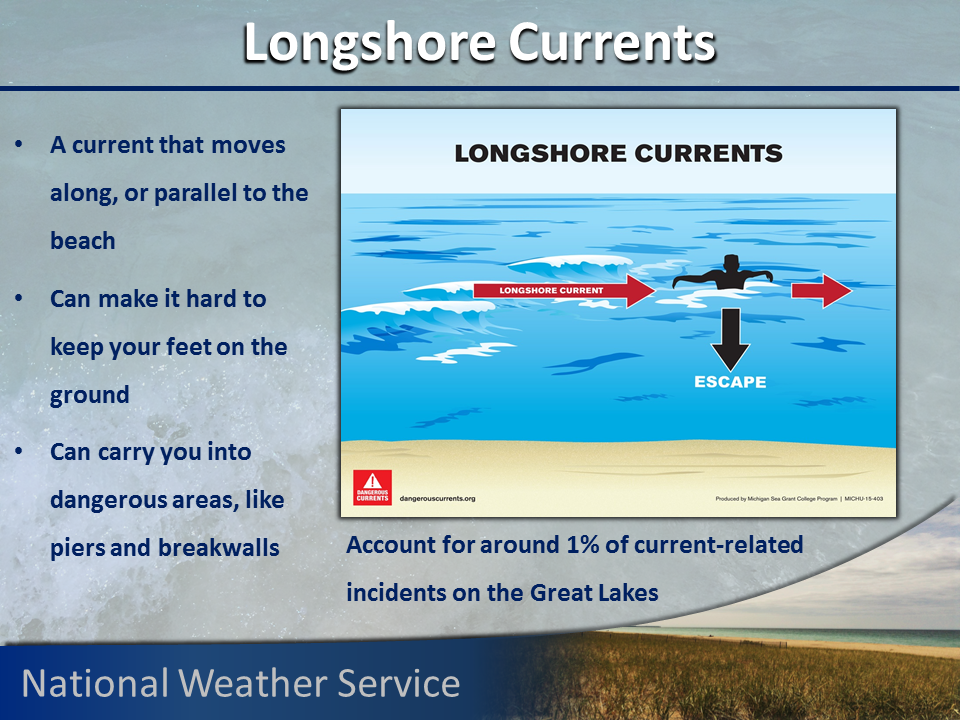Northern Indiana
Weather Forecast Office
About Great Lakes Waves and Currents

Learn about Great Lakes waves and currents to stay safe when swimming.

Swimming on the Great Lakes can be fun, but it can also be dangerous. Hundreds of people have lost their lives or been rescued while swimming in the Great Lakes.

Stay dry when waves are high. 85% of current-related incidents occur when waves are 3 feet or greater.

Dangerous currents form when water piles up near the beach. This happens when waves are high, or near shoreline structures, river outlets, and sandbars.

Use these tips to identify where dangerous currents may be present. Be aware that these signs can be hidden during times of high waves, especially on the Great Lakes.

A majority of current related incidents on the Great Lakes occur near piers and breakwalls. Steer clear of the pier!

Rip currents are strong currents that can pull you offshore into deeper water. Rip currents account for nearly half of current-related incidents on the Great Lakes.

Outlet currents form near water outlets like river mouths. Never swim near water outlets, as the current can take you offshore into deeper water.

Longshore currents move parallel to the beach, forming when waves approach the shoreline at an angle. Be careful, as these currents can move you into dangerous areas, like piers and breakwalls.

Channel currents form when water is squeezed between the shore and an offshore feature like rocks or an island. As water flows over the sandbar, the current can become strong enough to push you into deeper water.

Be current smart: follow these tips to keep yourself safe on the Great Lakes.

References and resources
Hazards
Heat Related
Watch/Warning
Outlook
Storm Prediction Center
Storm Reports
Submit a Report
Outdoor Event Watcher
EM Briefing
Climate
CoCoRaHS
FWA Daily
SBN Daily
FWA Monthly
SBN Monthly
Cliplot
Spring Frost Climatology
Fall Frost Climatology
Severe Climatology
Tornado Climatology
Local Information
Public Information Statement
Probabilistic Snowfall
Storm Data
Skywarn
COOP
Our Office
WSR-88D
Headline Criteria
NOAA Weather Radio
Weather History
Social Media Feeds
Weather Events Page
US Dept of Commerce
National Oceanic and Atmospheric Administration
National Weather Service
Northern Indiana
7506 E 850 N
Syracuse, IN 46567
574-834-1104
Comments? Questions? Please Contact Us.

